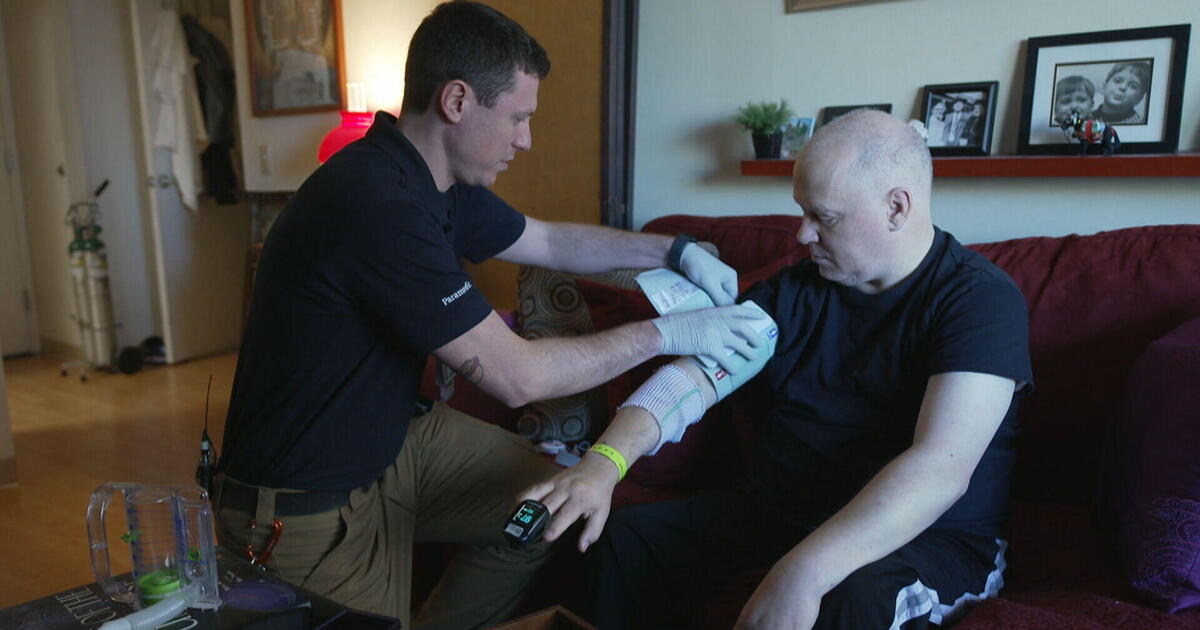Revolutionizing Healthcare: The Rise of In-Home Patient Treatment
As hospitals grapple with increasing overcrowding and resource constraints, the healthcare landscape is witnessing a transformative shift towards in-home patient treatment. This innovative approach to healthcare delivery not only alleviates hospital congestion but also significantly enhances patient comfort and recovery. By harnessing advancements in technology and a growing emphasis on personalized care, in-home patient treatment is poised to revolutionize the way we think about health and wellness.
The Need for Change in Healthcare Delivery
In recent years, hospitals have faced unprecedented challenges, including soaring patient numbers, limited bed availability, and a growing demand for services. The COVID-19 pandemic has further exacerbated these issues, leading many healthcare providers to rethink their strategies for patient care. The traditional model of hospital-centric care is becoming increasingly unsustainable, prompting a shift towards alternatives that prioritize patient preferences and outcomes.
In-home patient treatment is emerging as a viable solution. By bringing medical care directly to patients’ homes, healthcare providers can reduce the strain on hospitals while enhancing the overall patient experience. This shift is not just about convenience; it also aligns with a broader trend towards patient-centered care, which emphasizes the importance of individual preferences and the need for holistic treatment approaches.
Benefits of In-Home Patient Treatment
The rise of in-home patient treatment offers numerous advantages for both patients and healthcare systems. These benefits include:
- Enhanced Comfort: Patients often feel more relaxed and at ease in their own homes, leading to improved mental health and overall satisfaction with their care.
- Personalized Care: In-home treatment allows healthcare providers to tailor care plans to individual patient needs, ensuring that they receive the most appropriate interventions.
- Reduced Hospitalization Rates: By managing chronic conditions and providing preventative care at home, healthcare providers can help reduce the need for hospital admissions.
- Cost-Effectiveness: In-home treatment can be more cost-effective than traditional hospital care, benefiting both patients and healthcare systems.
- Improved Recovery Times: Studies have shown that patients recovering from surgery or illness tend to heal faster at home, where they are surrounded by familiar environments and support systems.
Technology: The Backbone of In-Home Patient Treatment
The success of in-home patient treatment is heavily reliant on technology. Advances in telemedicine, remote monitoring, and mobile health applications have made it easier than ever for healthcare professionals to deliver quality care at home. Key technological innovations include:
- Telehealth Services: Virtual consultations allow patients to connect with healthcare providers from the comfort of their homes, ensuring they receive timely medical advice without the need for travel.
- Remote Monitoring Devices: Wearable devices and home monitoring systems can track vital signs and other health metrics, enabling healthcare providers to keep an eye on patients’ conditions in real-time.
- Mobile Health Apps: These applications empower patients to manage their health proactively, offering reminders for medication, appointments, and lifestyle changes.
As technology continues to evolve, the capabilities of in-home patient treatment will expand, making it an increasingly attractive option for patients and providers alike.
Challenges and Considerations
While the rise of in-home patient treatment is promising, it is not without its challenges. Some key considerations include:
- Access and Equity: Not all patients have equal access to in-home care, particularly those in rural or underserved areas. Ensuring equitable access to these services is essential.
- Training and Support: Healthcare providers must be adequately trained to deliver care in a home setting. This includes understanding how to use technology effectively and providing appropriate emotional support.
- Insurance Coverage: Coverage for in-home care can vary significantly between insurance plans, making it crucial for patients to understand their benefits and options.
The Future of In-Home Patient Treatment
Looking ahead, the in-home patient treatment model is expected to continue gaining traction. As healthcare systems strive to become more efficient and patient-focused, the integration of in-home care into standard practices will likely expand. Some potential developments include:
- Increased Collaboration: Partnerships between hospitals, home health agencies, and technology companies will become more common, creating a seamless continuum of care for patients.
- Expansion of Services: In-home treatment will likely evolve to include a wider range of services, from physical therapy to mental health support, catering to diverse patient needs.
- Policy Advocacy: Increased advocacy for policies that support in-home care reimbursement and access will be critical in ensuring that these services are available to all patients.
Conclusion
The rise of in-home patient treatment represents a significant shift in the healthcare landscape, driven by the need for more patient-centered care and the challenges faced by traditional hospital systems. As technology advances and healthcare providers adapt to new models of care delivery, in-home treatment is poised to play a vital role in the future of healthcare. By prioritizing patient comfort, personalized care, and efficient resource use, in-home patient treatment not only alleviates hospital congestion but also fosters a healthier, happier society.
As we continue to navigate the complexities of modern healthcare, embracing this innovative approach may very well be the key to unlocking a more effective and compassionate system for all.
See more WebMD Network



